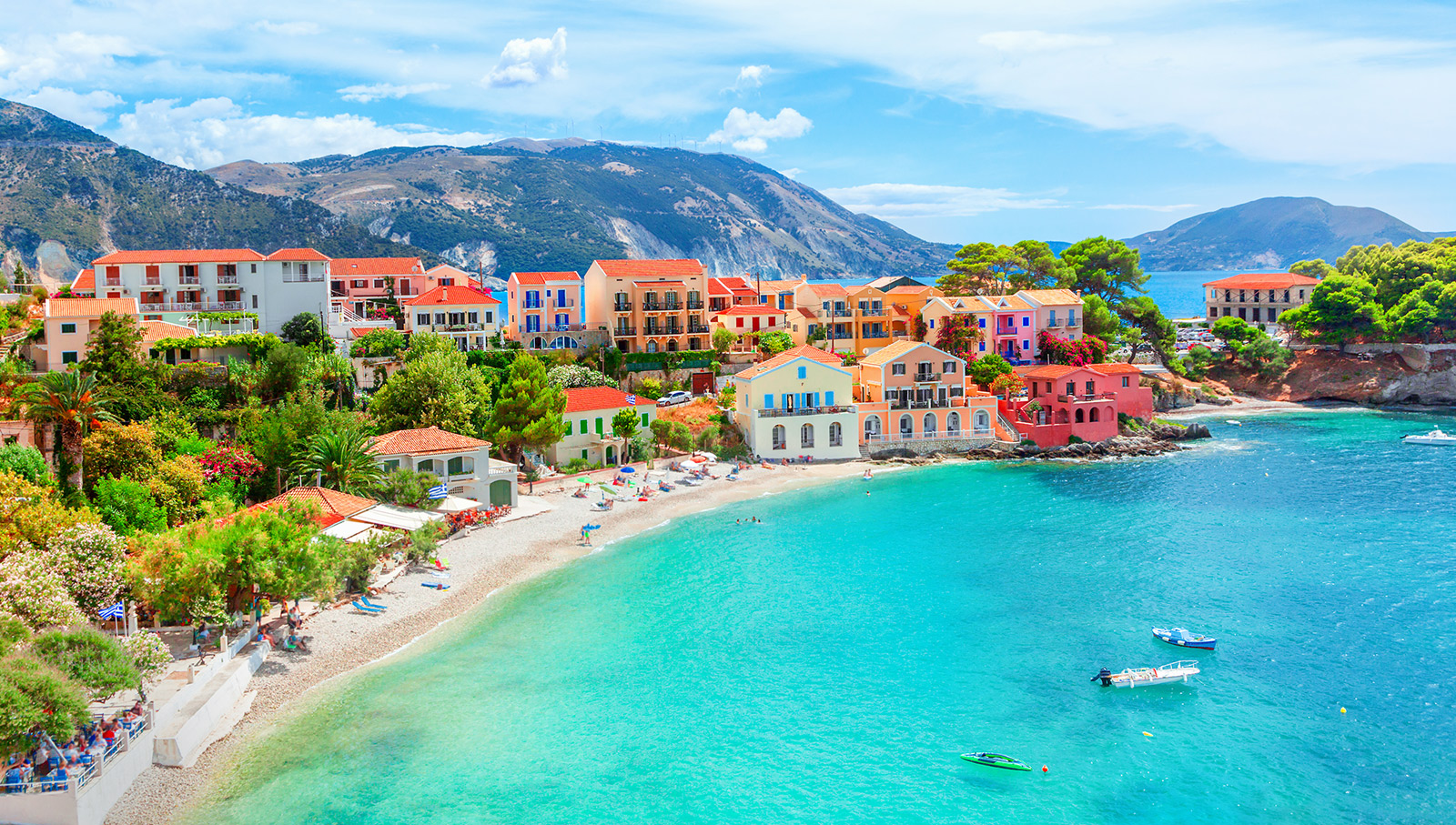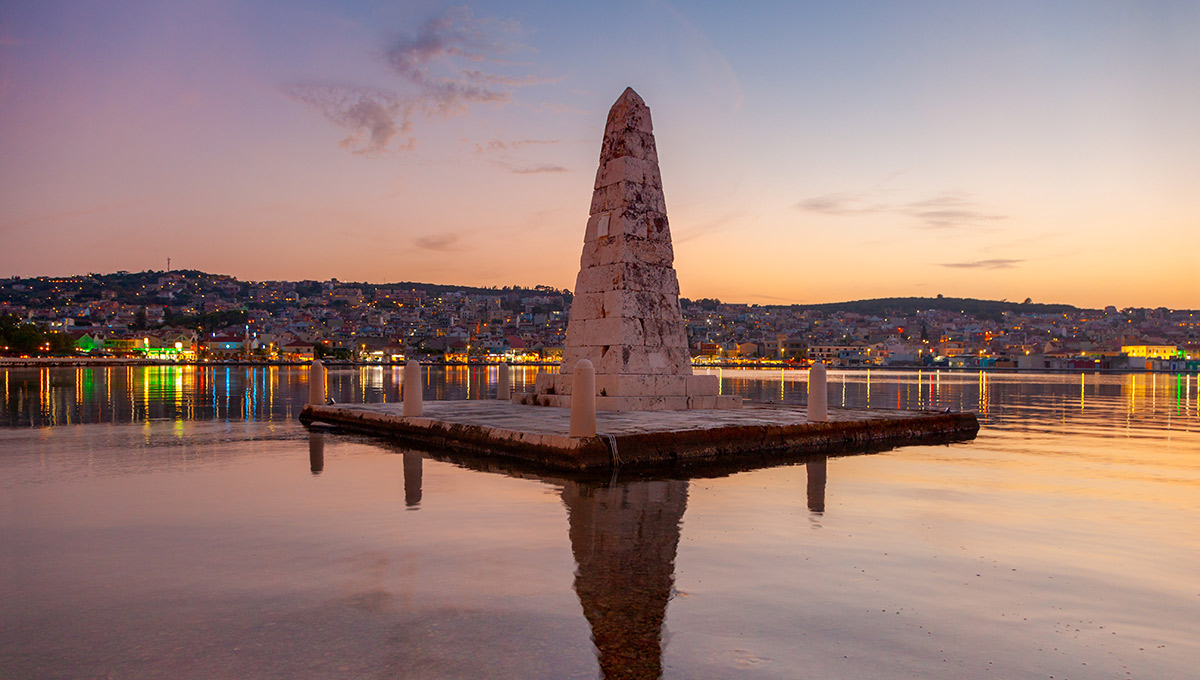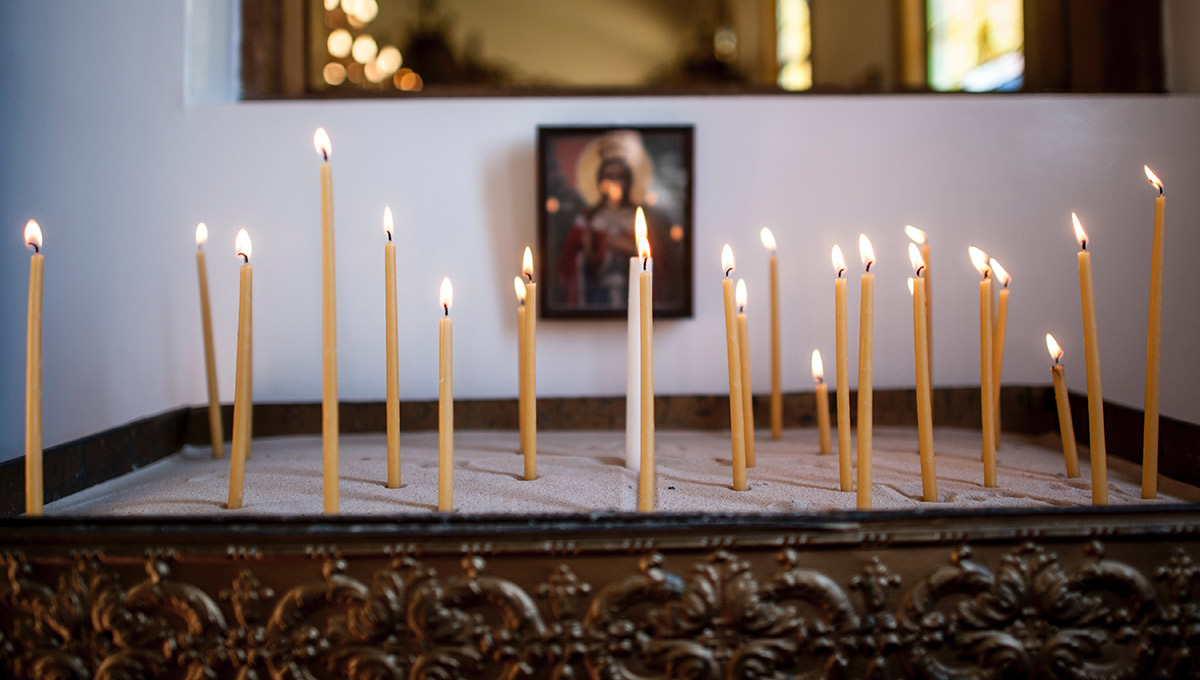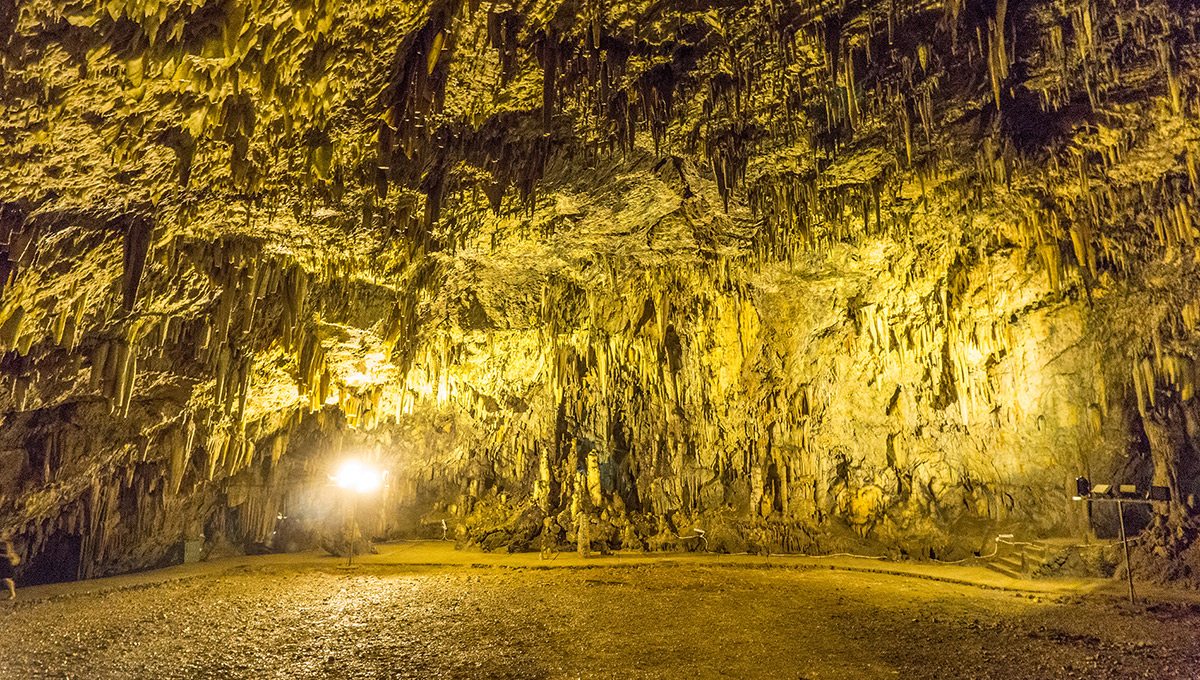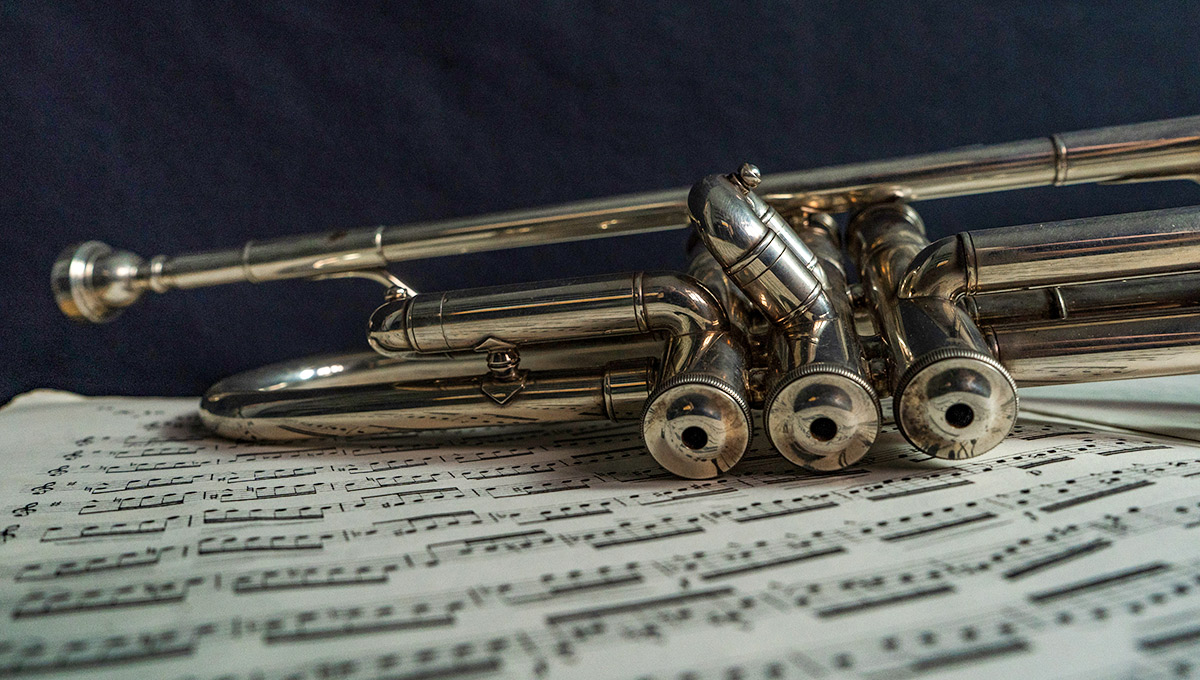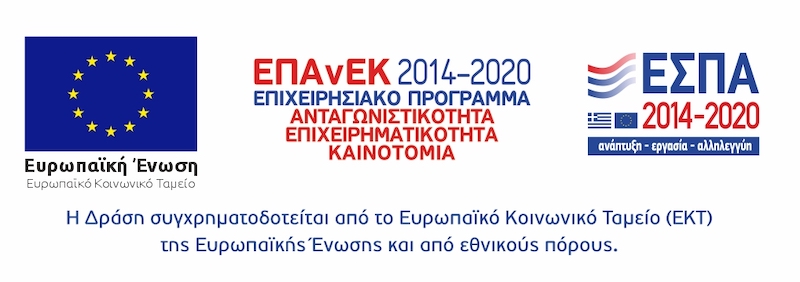what you need to know
before visiting our island
GUIDE TO KEFALONIA
Ask about anything!
Kefalonia and Ithaca form a group of islands of the Ionian Sea, located in Western Greece, between Lefkada and Zakynthos, opposite the entrance of the Gulf of Patras. Kefalonia is the most mountainous of the Ionian Islands and third in population after Corfu and Zakynthos. Its area is 788 km 2, while that of Ithaca is 96km2. The capital of Kefalonia, since about 1757, is Argostoli and Ithaca is Vathi.
The ferry connection of the two islands with the mainland is carried out through the ports of Poros, Sami and Fiskardo. From Poros there are itineraries to Kyllini in the Prefecture of Ilia, from Sami to Patras and Astakos in Aitoloakarnania and from Fiskardo to Lefkada. Ithaca is an intermediate stop on the routes to and from Patras and to and from Fiskardo. Also Kefalonia is connected to Zakinthos in the summer months with a ferry boat from the port of Pessada. During the summer months (from May to October) the itineraries are daily, in contrast to the winter months, when some of them are suspended due to reduced passenger traffic.
In addition, a large percentage of cruise ships sailing the Mediterranean on seven-day and fortnightly cruises arrive at the port of Argostoli every year.
Kefalonia, since 1971, has an airport. Its operation began with domestic flights, to and from Athens, with propeller-driven aircraft. In the intervening years, a multilevel project of development and modernization of the airport has been carried out, which has enabled it to provide high quality services to the ever-increasing traffic of aircraft and passengers. The airport has modern facilities of 4,500 sq. m. and a runway of 2,440 sq. m. x 45 m. in addition to domestic flights to and from Athens, during the summer months it is connected by chartered flights to the largest European airports.
During the off-season months, visitors can fly into Kefalonia through Athens.
MYTHOLOGY
The ancient myths that have survived, speak of a kingdom at the western end of the Greek world that belonged to the "Kefalonians". The first inhabitants of Kefalonia and the surrounding islands are said to be the "Tafioi" or "Televoes", descendants of Poseidon. However, the first king of the island was the mythical Kefalos, who gave it its name. There is extensive mythology about Kefalos, which seems to have been triggered by one of the most famous myths, that of his abduction by Eos. According to the website of the Ephorate of Antiquities of Cephalonia, "Eos (deity- personification of Dawn, daughter of the Titans and sister of the Sun and Moon) fell in love with Kefalos - whose origin was from Attica - and persecuted him all the way to Syria, wherever she reached him, grabbed him and made him hers. From their union Phaethon was born. Eight years later, Kefalos manages to return to his homeland and reconcile with his wife Procris. Unfortunately, the latter never ceased to suspect that her husband could be cheating on her. One day she secretly followed him on the hunt and hid behind a bush. Kefalos, seeing the branches of the bush swaying, believed that there was some large prey behind the bush, so he hurled his javelin, causing him to unwittingly kill his wife. After the murder, Kefalos is exiled from Athens and ends up in Thebes where he fights alongside King Amphitryon against the Televoi. After the victory of the Thebans, Amphitryon gave Kefalonia as a prize to Kefalos, who now founded his kingdom there. Kefalos had 5 sons, Cranios, Paleas, Pronisos, Samos and Arisios. The first four later founded a city-state, creating the well-known "Tetrapolis" mentioned by Thucydides, while Arisius became king of Ithaca, father of Laertes and grandfather of Homeric Odysseus".
HISTORICAL OVERVIEW
The archaeological findings in the area of Fiskardo, Sami and Skala place the human presence on the island to appear in the Paleolithic era (50,000-10,000 BC) and continue into the Neolithic era (6,800-3,200 BC). The data for the second period came exclusively from findings in the caves of Drakaina Poros and Gerogobos Palliki, however today, they are also supported by various outdoor facilities that have been located on the coast of the island and in the interior.
Settlements were established throughout the island during the Prehistoric era, while it experienced its first major development in the Mycenaean years (1,550-1,050 BC), as evidenced by the findings and the impressive chamber and vaulted tombs that were investigated at the sites Mazarakata, Lakithra, Diakata and Prokopata of the Argostoli, Mavrata and Tzannata of the Eleios-Pronnoi D.E., Kontogenada and Skinea of the Palliki D.E. and finally, Metaxata and Kagelisses of Livathos. The vaulted tomb in Tzannata is one of the most imposing tombs of Kefalonia. In addition, the cemetery in Mazarakata is the largest in area, while the richest in findings to date is that of Lakithra.
The theory that the island was deserted after the collapse of the Mycenaean civilization (after 1,050 BC) is permanently abandoned based on excavation data. At that time, gradually began to create the first organized settlements, which during the Classical period (5th-4th century BC) would be formed in the four city-states, Krani, Pali, Pronnoi and Sami, which are mentioned by Thucydides as the "Kefalonian Tetrapolis". The cities are autonomous and independent, with separate coins and impressive fortifications.
They were at the edge of the Greek world at the time, but they were not isolated at all and played an important role in the political events of the time. During the Persian wars, the participation of Pali in the battle of Plataea (479 BC) with 200 hoplites is mentioned, while in 434 BC ships from Pali took part in the naval battle of the Corinthians against the Corfiots. The Kefalonian Tetrapolis reached the peak of its power during the Hellenistic period, while in 220 BC Kefalonia became a member of the Aetolian League and a little later acquired an isopoliteia. This resulted in the Cephallenians coming into conflict with the Macedonians, who were then fighting the Aetolians. Philip V in 218 BC campaigns against the island and besieges, but without success, Pali, and so abandons all attempts to capture the rest of the island. In 189 BC the Romans besieged Sami, having already captured Krani, Pali and Pronnoi, but the inhabitants of Sami put up strong resistance. Finally, after a four-month siege, Sami would pass into the hands of the Romans, an occupation that was accompanied by the enslavement of the inhabitants.
During the Roman centuries (188 BC-330 AD), under the rule of Rome the four cities, after the economic decline brought by the new situation, gradually began to recover. New cities are founded, such as Katelios and Fiskardo. The natural harbor of Sami is a Roman naval base and is therefore supplied with public benefit projects, bringing great economic prosperity to the inhabitants, which is also evidenced by the findings kept in the Archaeological Museum of Argostoli.
After the division of the Roman Empire in 495, the island belongs to the Byzantine Empire and the Theme of Cephalonia is founded. It later fell into the hands of Frankish nobles, followed by two short periods of Ottoman occupation (1479-1481 and 1485-1500).
In the period 1500-1797 Kefalonia was under the rule of the Venetians, who created the necessary infrastructure for trade, as well as fortifications, such as the castle of Agios Georgios in Livathos and the castle of Assos in Erissos.
During the Napoleonic Wars the island was under French occupation, while in 1809 it was occupied by the British. The period of British rule ended when in 1864 the union of the Ionian Islands with the rest of Greece took place.
Kefalonia is the most mountainous of the Ionian islands. The southern part of the island is dominated by Mount Ainos, with an altitude of 1628 meters. In Ainos thrives the rare species of Kefalonian Fir, a type of fir with intense dark color that is also described as "Black Fir", while the protected species of small wild horses of Ainos lives and reproduces there. Ainos was declared a National Park in 1962 and since then it has been intensively protected by local authorities for fear of fires that have cost large areas covered by the Kefalonian Fir in the past.
The flora and fauna of Kefalonia and Ithaca is similar to the rest of the Ionian Islands. In Ainos, as well as in the lagoon of Koutavos, in Argostoli of Kefalonia, which in recent years has been embellished, rare species of birds appear, being another pole of attraction for visitors who like bird watching, the so-called bird watching.
The sandy shores of Kefalonia offer shelter for the reproduction of the caretta caretta sea turtle. In fact, in recent years, the ecological organizations operating on the island have worked hard to protect the species, resulting in an obvious increase in the turtle population. Now it is often possible to admire these creatures up close, since about 30 turtles move in the area of Argostoli and daily approach the port, causing the admiration of visitors who rush to photograph them.
Very close to Argostoli, a geological phenomenon is observed, connecting the West with the East side of the island. In the area of "Katavothres", the sea water "descends" from holes in the rocks, travels under the island in sea tunnels and appears in the lake cave of Melissani, in Karavomylos Sami. This course of water was proved by experiments carried out in the 80s, where suitable pigments were thrown into the Sinkholes and after a few days, appeared in the waters of Melissani.
The Lake Cave of Melissani is perhaps the most impressive of the natural attractions of the island, since it is a cave whose roof allegedly collapsed in the pre-historic times, due to an earthquake, revealing a beautiful lake. Now the opening of the roof allows sunlight to enter the cave, forming hundreds of different shades during the day. Archaeologists have discovered on an islet of the cave remains of worship of the god Pan. Pan, was is an ancient Greek, an idealized, anthropomorphic secondary deity, who was intertwined with the "fauna" of Nature, (humans and animals) in a two-way relationship of protection, but also a personification of the genetic force of life. That’s why Pan is always pictured as a person with the body of a human but the legs of a goat. Legend has it that the lake took its name from the nymph Melissanthi, who drowned in its waters because of the unfulfilled love she had for the goat-legged Pan. Ancient proof that love is blind but Mellisanthi took it a bit too far.
In the area of Sami is the cave of Drogarati, which was discovered about 150 years ago and is adorned with impressive stalactites and stalagmites. The cave has impressive acoustics and -in the past- it has hosted musical events.
In Ithaca, near vathi is the Marble Cave, or "Cave of the Nymphs", where it is said that Odysseus hid the gifts that the Phaeacians had given him on his return home. Anna Petrocheilou, in her book "The Caves of Greece", points out that it is possible that it is the cave where Homer mentions that the nymphs Naiads were worshipped.
In Ithaca there is also the forest of Perachori and the monolith of Arakli.
The beaches of Kefalonia and Ithaca are characterized by their turquoise clear waters, while depending on the area, they are sandy or rocky. A well-known beach that is photographed every year by thousands of visitors is Myrtos. Most of the organized beaches are located in the southern part of the island, with the most characteristic ones being those of Skala, Lourdas, Avithos and Ai Heli. In the northern part we find rocky beaches with cooler waters and greater depths, such as Antisamos and Emblisi.
Outside the village of Razata are the ruins of the walls of the ancient city of Krani. They were called Cyclopean walls because of their size since they have a perimeter of about four kilometers. They are considered important because they give us information about the fortification technique in Greece during the Mycenaean period.
In Kefalonia there are two fortresses. The first, which until 1757 was the capital of the island, is called The Castle of Agios Georgios and is located at an altitude of about 300 meters above the settlement of Peratata. It is believed that it was built in the12th century AD by the Byzantine emperors, but it was modified by the Venetians who also built its outer walls that survive to this day. Inside, churches and buildings are preserved, while remarkable post-Byzantine icons from the ruined temples of the castle are kept.
In the northern part of the island, in the traditional settlement of Assos, the small peninsula is crowned by the Venetian fortress. Its construction began in 1593, in order to protect the island from the north, both from the Turks who often attacked the area from Lefkada, and from pirates. The size of the project is evidenced by the large perimeter of the walls, about 3000 meters of wall, with 4 gates and 5 bastions.
The castle of Assos was never inhabited to the extent that it had been planned, the inhabitants of the area, worried about the lack of water in the castle, hesitated to dwell within its walls. In the early 1930s and until 1953, the rural prisons operated inside the fortress, which caused the movement of the few families that inhabited it, who settled permanently in the settlement of Assos.
In 1813, Colonel de Bosset discovered the vaulted tombs of Mazarakata. It is the largest cemetery of the Mycenaean period, with 16 vaulted tombs and 83 burials, which testify to the prosperity of the Mycenaean civilization in the area.
In 1992, in the village of Tzanata, another vaulted Mycenaean tomb came to light, in which valuable golden offerings were found, a fact that – in combination with the size of the tomb – leads to the conclusion that it is a tomb of wealthy rulers of the time.
Findings from the Paleolithic and Neolithic period, the Mycenaean period as well as from the 5th century onwards, are hosted in the respective three rooms of the Archaeological Museum of Argostoli.
On the ground floor of the Korgialenio Library, the Folklore Museum is housed. In the two exhibitions hosted in its new wing, historical and folklore elements are exhibited, dating from the time of the Venetian occupation to 1953. The permanent exhibition is divided into 3 sections: representation of urban and rural life, ecclesiastical art and city design.
In the center of Argostoli dominates the building of the Municipal Theater of Argostoli "Kefalos". It is the largest theatrical stage of Kefalonia and its history begins in the19th century. It was used to house refugees after the Asia Minor catastrophe, was bombed during World War II and was severely damaged by the earthquake of 1953. Since 1994 it has been operating, among other things, major theatrical performances, international productions and concerts.
The newest archaeological exhibition is the one of Sami, founded in 2021, where the artifacts uncovered in the area, are exhibited in 4 main chambers: 1. Inhabitation of Sami, 2. The importance of the water element, 3. Everyday life and 4. Burial customs. In the courtyard of the museum, visitors can see the preserved mosaics from the roman era.
A very important project that greatly facilitated access to the capital of Kefalonia, was built in 1813 by the Swiss Charles-Philip De Bosset, now called the "Devosetos Bridge". For many years it was used for the passage of pedestrians and vehicles, however in recent years it has been pedestrianized and restoration works are being carried out since the use had suffered serious damage. Almost halfway through the bridge is the obelisk – its trademark Argostoli, dedicated to the builders of the bridge.
The most important monastery of Kefalonia is that of Agios Gerasimos, in the valley of Omala. Saint Gerasimos, the patron saint of the island, was a monk from Trikala of Corinthia and founded the monastery in the 16th century, renovating an older one, which was dedicated to the Virgin Mary. Saint Gerasimos died in 1597 and was canonized in 1622. His relic is kept in a silver urn while under the monastery is the cave in which the Saint practiced asceticism. Throughout the year, pilgrims from all over Greece come, while on August 16, the death of Saint Gerasimos is honored with a glorious festival. On October 20, the return of his holy relics to the Monastery is honored.
In the area of Travliata, there is the Monastery of St. Andrew. The area of the monastery hosts the Byzantine Ecclesiastical Museum, in a separate building erected for this purpose. The exhibits of the Museum as well as part of the decoration of the church of Agios Andreas, date from the13th century onwards. The exhibits include the shroud of the National Martyr Patriarch of Constantinople Gregory V, the epitrachelion of Agios Nektarios and the shirt of Agios Panagis (Basias). Two handwritten letters of Saint Cosmas Aitolos are also exhibited in the Museum, of the year 1777. The monastery celebrates twice a year, on November 30, the memory of Apostle Andrew and on Easter Friday, the Zoodochos Pigi, who is also the second patron saint of the Monastery.
On the great feast of the Fifteenth of August, pilgrims flock to the Church of Panagia Fidiotissa in Markopoulo to see the snakes of the Virgin Mary. It is a miracle that is repeated every year on August 15, where small snakes move through the monastery near the faithful. In fact, if they do not appear in a year, it is considered a bad sign, as happened in August 1953 when the island was then hit by the earthquake.
In every village of Kefalonia and Ithaca there are many churches dedicated to patron Saints and the Virgin Mary. Many of them are many centuries old, offering attractions for every visitor interested in ecclesiastical art.
Along with the tourist activity that constitutes a large part of the island's economy, the inhabitants are also engaged in animal husbandry, viticulture and olive growing, beekeeping and fishing. The island produces high quality cheese products such as feta, kefalotyri and mizithra. Also, large areas are covered by olive trees, from which pure olive oil is produced, while in the wineries of the island wine is produced, bottled and exported of high oenological value, mainly from the "Robola" variety, which thrives especially in the climate of Kefalonia, but also from many other varieties cultivated and grown on the island, putting Kefalonia on the map of the most important wine tourism destination. The island is also known for its aromatic herbs such as oregano and thyme, which are found in abundance, especially in the northern part of the island.
Kefalonian gastronomy follows the principles of the Mediterranean diet, which it reflects in delicious recipes such as traditional meat pie, riganada, aliada (garlic sauce) and tsigaridia. The rich fishing activity offers excellent quality fish which are cooked in various ways thus enhancing the richness of Kefalonian cuisine. A typical Kefalonian dish is the "bourbourelia", a soup with mixed legumes and wheat, traditionally cooked on the day of the Presentation of the Virgin Mary, on November 21.
In the field of confectionery, pastokidon and mandoles are trademarks of the Kefalonian taste.
Visitors can discover the taste of our island in the numerous restaurants throughout our resorts, as well as our private dinning experiences and cooking lessons, which we can organise for you during your stay. Include it in your request form and you will be surprised to see what an easy and fun experience it is.
In Kefalonia and Ithaca, since the 1980s when argostoli airport began to accept international flights during the summer months, the phenomenon of mass tourism appears. The tourist offices of the island are mainly engaged in incoming tourism, providing services to both tour operators and individual visitors. The offices undertake to provide handling services to aircraft (refueling, cleaning, baggage handling), transportation of visitors by bus to and from hotels (transfer), while during the tourists' stay, they provide comprehensive excursion and tour programs, both bus excursions daily cruises. The excursion programs include activities such as those described in our travel services section.
The countries from which visitors come are mainly Britain, Germany, Italy but also the Netherlands, Austria, Romania and almost every country in the world.
A very large volume of visitors comes to the island with yachts, both sailing boats and motor yachts that can be booked in advance to enjoy a full marine experience, or be planned as a day out in the sea during a resort-based vacation.
Many of the visitors, due to the large size of the island, prefer to rent vehicles for their transportation, one of the numerous services we provide at our travel services section.
In Kefalonia and Ithaca, other types of tourism appear, such as agrotourism and ecotourism. The two islands, especially Ithaca, are ideal for quiet family holidays as well as for exploration and action.
Kefalonia has large hotel units of up to 5 stars, mainly in the area of Lassi, Skala, Fiskardo and Xi, as well as a plethora of self-catering accommodation for rent throughout its area, while in recent years luxury villas with swimming pool have been built, which are rented on a weekly basis and welcome more than 50% of visitors staying on the island. Ithaca also has luxury houses for rent, while in Vathi there are also great equipped hotels. Authentic Kefalonia specializes in offering unique accommodation that introduces the visitors to the true Kefalonia, making our guests feel included and involved. Here are some of our unique places.
Kefalonia and Ithaca are two islands that largely retain their traditional character. Despite the blow of the great earthquake of 1953, which caused the collapse of most of the houses on the two islands, traditional architecture remains as a basic principle for the construction of new buildings. So far, the balance of built and natural environment is satisfactory. However, local authorities warn against compliance with the measure in terms of building rate in some crowded areas. Ithaca is considered more of an "unspoiled" place, since due to its small size and limited infrastructure, it cannot accept mass tourism to the extent that larger islands accept it and this is considered as its strong point. On the other hand, in Kefalonia, the samples of exaggeration are limited. The inhabitants of Kefalonia have a great asset: having been influenced by other cultures in the depths of time, they have incorporated and preserved many good elements, which - in combination with their temperament - help to maintain harmony.

